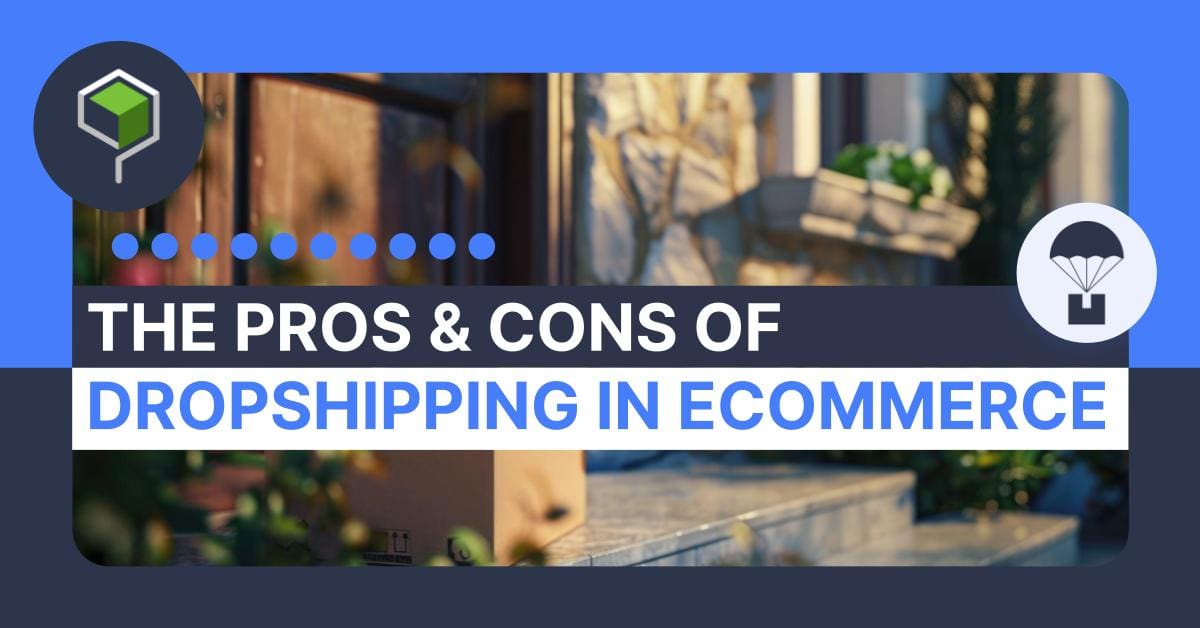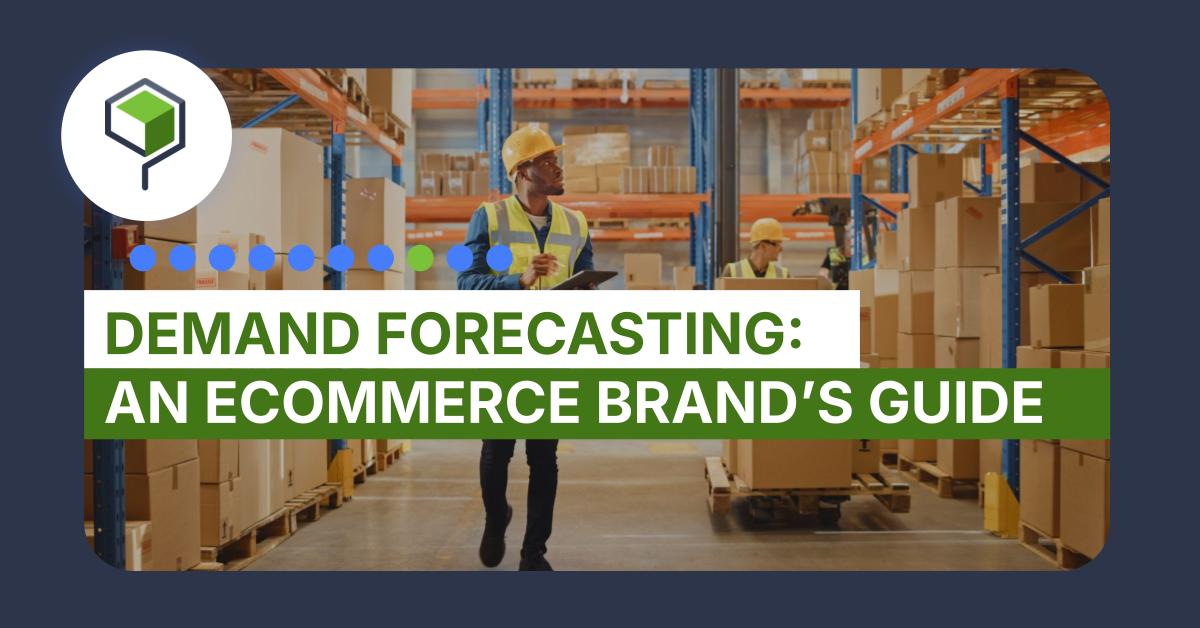The Pros and Cons of Dropshipping in Ecommerce

It’s easy for ecommerce businesses to look at the dropshipping industry and see only the advantages: Low running costs, plenty of suppliers to choose from, and best of all, no need to worry about the fulfillment process!
With this in mind, it’s hardly surprising the global dropshipping market is forecast to grow to $476.1 billion by 2026.
However, there’s more to the dropshipping model than outsourcing inventory management and fulfillment to a faceless third party. To make dropshipping in ecommerce successful, your business needs a niche market, great customer service, and a solid marketing strategy to make your brand stand out from the thousands of other dropshippers.
In this blog, we’re diving into the pros and cons of dropshipping–and what you need to consider before committing to dropshipping as an ecommerce business.
What is dropshipping?
Dropshipping is a fulfillment model where an ecommerce business doesn’t store or ship the products it sells. Instead, items are purchased from a third-party supplier, who’s in charge of fulfilling and shipping customer orders. Because the online store never actually handles the product directly, they can focus purely on marketing and selling.
An ecommerce brand might source and sell some of their products via dropshipping, while still operating a warehouse to sell their own stock. Or, they might dropship all of their products and only operate a storefront and customer support channels.
What is a dropshipping business?
A dropshipping business is when all of the products that a retailer is selling are fulfilled and shipped via dropshipping. The brand does not own any of the stock outright, and simply uses its website to market and sell products. In most cases, customers will be unaware the items they are buying are not being shipped by the brand they are purchasing from. Setting up a dedicated dropshipping store is an easy way to start selling products quickly, and not have to worry about finding warehouse space or operators.
How does dropshipping work?
When dropshipping, an ecommerce business lists the items being provided by a third-party supplier on their online store. When a customer places an order for those products, the seller accepts payment and processes the order before forwarding these details to the supplier. The supplier then fulfills and ships the order directly to the customer. This means the ecommerce business never actually gets involved in the fulfillment process, and is only responsible for sending order and customer details to their dropshipping partner.
Pros of dropshipping
Low barriers to get started
Unlike traditional retail businesses, a dropshipping model doesn’t require you to invest in costly infrastructure or labor to start selling. All you need to do is set up an ecommerce store using an ecommerce platform like Shopify, find dropshipping suppliers, list your products, and you’re good to go! And because you don’t have all of your capital tied up in your inventory, you have more resources available to invest in branding and marketing your business to potential customers.
No inventory headaches
Inventory management is one of the most challenging parts of being an ecommerce brand. Ensuring that your inventory counts are accurate, warehouse space is sufficient, and you aren’t accumulating excess inventory from unsold products is a lot of operational pressure for small brands. With a dropshipping business model, this is taken completely out of your hands, so all you need to focus on is managing supplier relationships and how you market your products.
Quickly expand your product offerings
ecommerce is a constantly shifting landscape, and a successful business can keep pace with the demands of its customer base and stay up to date with the latest trends. With dropshipping, it’s far easier to expand into new product categories or new niches because you don’t have to manage inventory upfront. Via reliable dropshipping suppliers, you have easy access to an extensive catalog of products, without committing to a huge shipment of inventory that you don’t know is going to perform.
Scale your business with ease
Scaling seamlessly as your order volumes grow is one of the hardest parts of being an ecommerce business. An unexpected spike in demand for a new product or the holiday rush can result in delays to order fulfillment or shipping when you are responsible for fulfilling orders yourself, which can cause you to miss out on key growth opportunities if you aren’t able to switch gears quickly. Because your suppliers are handling the process of getting goods from A to B, the model is easy to scale as the load is typically spread between multiple suppliers.
Cons of dropshipping
Lower profit margins
While dropshipping helps your business to scale more seamlessly and meet demand, dropshipping companies can take a significant portion of each sale. This means that your business has to net a high volume of sales for your business to stay profitable. Product categories that typically perform well in an ecommerce setting, such as apparel, footwear, and home decor, are also some of the most competitive. So, while dropshipping can be a low-risk business model, marketplace saturation and low profit margins have made it a lot more challenging for ecommerce brands to make their dropshipping businesses profitable.
Customer service limitations
Once a customer order has been placed, your brand has very limited control over the next stage. Because fulfillment and shipping are in the hands of your dropshipping supplier, you simply have to hope that everything goes smoothly. Because you are the vendor that the customer is interacting with, any shipping delays, missed deliveries, or damaged orders will have to be solved by you – even if the issue was not your fault
This creates a tricky dynamic for customer service, as the customer won’t necessarily know that their order isn’t being shipped or handled by you directly. Nonetheless, you will have to find a speedy resolution if you hope to salvage the customer relationship, as a poor customer experience will lead to high customer churn and damage brand reputation.
Lack of unique products
Because dropshipping relies on third-party suppliers, it can be difficult to ensure a memorable product selection. Often, brands that rely on dropshipping will end up selling the same products as hundreds of other online stores. This makes it very difficult to create a compelling value proposition for why a customer should purchase from you, not another vendor – or even just default to Amazon. When dropshipping, your product offerings are very unlikely to be a point of difference for your brand.
This means that online retailers who plan to rely on dropshipping need to think carefully about how they can create a unique brand identity that resonates with their target audience, as this is going to be the difference maker that lands you sales. However, this is made more challenging by the next point:
Missed branding opportunities
Because the entire fulfillment process is in the hands of your dropshipping suppliers, you have limited control over the brand experience upon delivery. Because they are supplying numerous businesses, third-party suppliers will typically use generic packaging that is not associated in any way with your business. Given that the moment of delivery is one of the most powerful touchpoints in ecommerce, missing out on the ability to customize this experience with custom packaging or inserts makes it a lot more challenging to build repeat purchasing behaviors.
Dropshipping is continuing to rise in popularity as ecommerce businesses look for new ways to stay nimble and keep pace with customer demand, while also lowering their running costs. Although a dropshipping business model does offer a cheaper, easier set-up for online sellers, the lower profit margins, difficulty building a unique product assortment, and customer service challenges also need to be taken into account. Ultimately, the success of your dropshipping business will depend on how successfully you can differentiate your brand, manage customer expectations, and source products that give your business a competitive edge within a highly saturated market.



